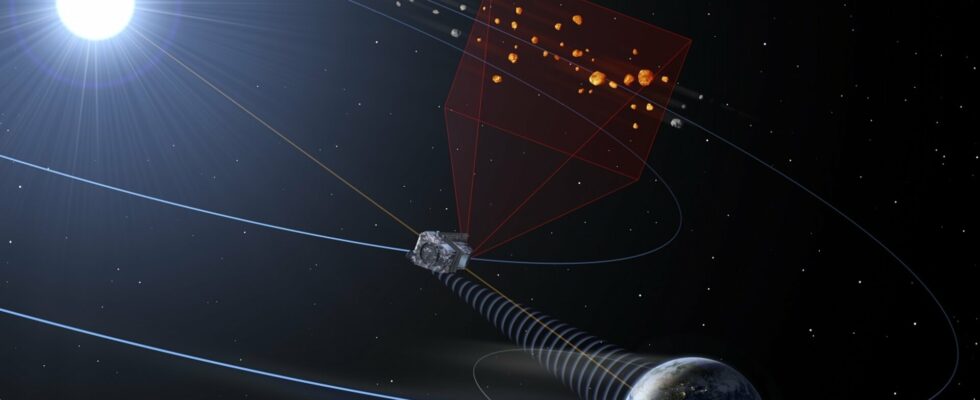The potentially most worrying asteroids are those that have not yet been detected, the fault of their orbit “too close to the Sun” from Earth. A mission of the European Space Agency wants to help to better discover and catalog them. And maybe give yourself time to deflect a danger.
She should act in concert with her American cousin, NEO Surveyor.
There’s still a little danger
A few days ago, February 15, was the 10-year anniversary of the Chelyabinsk meteorite. This small asteroid, between 15 and 20 meters in diameter, had not been detected and had entered the atmosphere above Russia in 2013, generating a strong shock wave and ending its course in a frozen lake. The surrounding population had been affected. Glass breakage, sonic shock, the energy released was equivalent to that of a 500 kiloton nuclear bomb (about 30 times that of Hiroshima). The event had then generated around the world a major effort to detect a maximum of near-Earth asteroids, i.e. those which are likely, over time, to cross the orbit of the Earth-Moon system.
Today, agencies estimate that they have cataloged over 80% of all small bodies over 300 meters in diameter. But less than 20% of the smallest, whose population is estimated at 30,000 for asteroids over 100 meters in diameter, and between 40 and 50 million for those measuring only a few meters, have been spotted.
Agencies keep watch
Nevertheless, detection is constantly improving. On February 13, a small meteorite about one meter in diameter fell in Normandy. It was observed with astonishment by a large audience, as it had been detected a few hours before the impact by a scientist (Krisztián Sárneczky) from a Hungarian observatory. Ground resources, but also space observatories are mobilized to detect, catalog and calculate trajectories.
So far, no detected asteroid (apart from very small bodies captured a few hours before collision) has been brought to cross our path too closely. But one of the risks is hidden in the population of asteroids which is permanently (or in any case a large part of their orbit) “Sun side”, and therefore invisible to our observations. The European Space Agency is thus in the process of designing a specific space mission to counter this effect: NEOMIR.
Faramir, Boromir and NEOMIR
NEOMIR will use wide-field optics, with a telescope approximately 50 cm in diameter and infrared sensors, and will specialize in the detection of asteroids. But above all, it will be placed at the Earth-Sun Lagrange point L1, 1.5 million kilometers closer to the Sun than the Earth. What, with the appropriate protections, to observe near-Earth asteroids from an unprecedented angle!
The European agency is planning a vehicle that will be able to detect a large number of asteroids, mainly more than 20 meters in diameter. Taking off around 2030, NEOMIR will be autonomous, but data processing will be carried out in such a way as to work in concert with other agencies, and in particular NASA, which will operate its own NEO Surveyor mission by then.
As a reminder, NASA and ESA have also initiated, with the DART and Hera mission, the first planetary defense tests, just in case…
Source : ESA

0